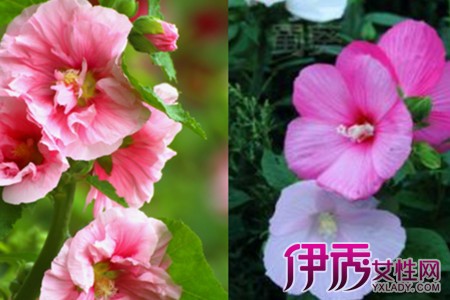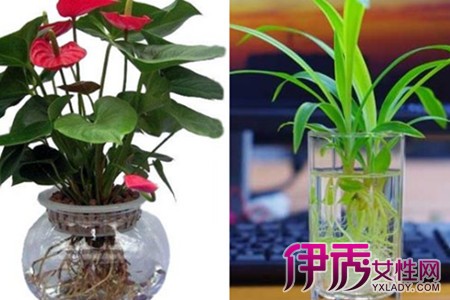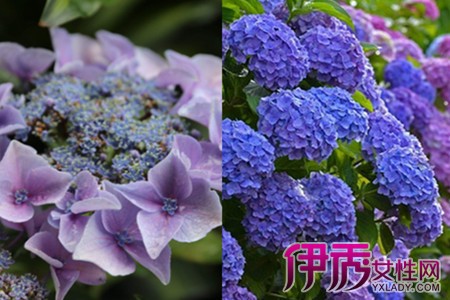It is not a dream to learn the planting method of hollyhock and let your own flowers bloom

If you want to grow your own hollyhock, you must first choose a good hollyhock seed. The bigger the hollyhock seed, the more likely it is to sprout. Here to remind you to buy seeds as far as possible not to go online because the emergence rate of old seeds is low, even if sprouting is very difficult to survive. After we buy back the seeds, we will prepare the flowerpots and soil, and the flowerpots can use ordinary clay pots to make the soil soft and breathable.
After planting, if the indoor temperature is warm enough, you can put it in a sunny and ventilated place on the windowsill, and if the room temperature is not warm enough, you can cover it with a film to promote the seed to germinate as soon as possible. Newly planted hollyhock seeds must ensure sufficient water. After sprouting, you can use a spray can to spray water to the small buds every morning and evening so that they can grow faster.
Hollyhocks will grow quickly after sprouting. If you plant a lot of them in one pot at a time, you should divide the pots in time. After dividing the basin, water them every day, and a month later, you can fertilize hollyhocks, using the nutrient solution of flowers sold on the market. Fertilizer to ensure that the concentration of water diluted once a month is not too high, because the stalk of hollyhock is very long, so it is best to tie him with thicker branches from the side so as not to break the flower rod.
When the flower stalk finds a certain height, the flower of hollyhock is almost ready. When you see the bud of hollyhock, you can fertilize it for the last time before blooming. Then do not wait for the hollyhock to blossom in fertilization. some residual flowers and branches should be cleaned up in time after the hollyhock blossoms, so as to ensure that its nutrients will not be dispersed before it can grow healthily.
Cultivation methods and techniques of traditional Chinese medicine hollyhock
Hollyhock, also known as Yizhang Hong, Dashu season, military sunflower, Wu Kui, Dou Peng Hua, etc., is a biennial erect herb of the genus Malvaceae, native to Sichuan, China, and now it is widely distributed in China, with tender leaves and flowers edible, the skin is a high-quality fiber, and the whole plant is used as medicine. It has the effect of heat-clearing and detoxification, antitussive and diuretic, and the root can be used as a lubricant with high cultivation value. Let's take a look at the planting method of hollyhock.
Growth habits of hollyhock
Hollyhock is widely distributed in China, including East China, Central China, North China and South China, and is widely cultivated all over the world. Like plenty of sunshine, withstand half-overcast, but avoid waterlogging. It has strong saline-alkali tolerance and can still grow in soil containing 0.6% salt. It is resistant to cold and can survive the winter safely in the open field in North China. It grows well in loose and fertile sandy soil with good drainage and rich in organic matter.
Propagation methods of hollyhock
1. Sowing: sowing in North China generally sows in the same year and blossoms in the same year. The seeds germinate about a week later, and when 2 or 3 true leaves grow out, they are transplanted once.
2. Ramet: the ramet propagation of hollyhock can be carried out from August to September, dig up the old plant, divide the stem bud with fibrous root for renewal and planting, water immediately after planting, and blossom the following year.
3. Cutting: the stem that sprouts at the base of hollyhock can be selected as cuttings in spring, the length of cuttings is 7 to 8 cm, sandy soil is used as substrate, and shade to root after cutting.
Planting method of hollyhock
1. Watering: when 2 or 3 true leaves grow out of hollyhock seedlings, they should be transplanted once, the row spacing should be enlarged, and should be watered at the right time after transplanting. The flowering period should be properly watered to promote a long flowering period and a good flowering all the way to the top of the stem.
2. Fertilization: during the growing period of hollyhock seedlings, attention should be paid to fertilization, removing and loosening the soil in order to make the plant grow healthily. After the flower bud is formed in the leaf axil, it is necessary to apply phosphorus and potassium fertilizer, and cut off a few pieces of the leaves at the base.
3. Root cutting: when planting hollyhocks, in order to make the plant low and prevent lodging, the roots can be cut off under the conical shape of Juglans mandshurica around the plant in June, once every 2 to 3 weeks, and then watered immediately.
4. Harvest: when the hollyhock fruit is yellow and ripe, it should be harvested immediately to avoid scattered seeds. After the end of flowering, the aboveground parts of the plant can be cut off and new buds can be sprouted to form tufted plants. Hollyhock is easy to senescence and should be renewed after 2-3 years of cultivation.
Control of diseases and insect pests of hollyhock
1. Sunflower rust
[harm] perennial hollyhock is prone to sunflower rust, the leaves of susceptible plants turn yellow or die, and brown and powdery spores can be seen on the back of the leaves.
[control] spraying Bordeaux solution on plants in spring or summer or disinfecting seeds before sowing can have a control effect. At the initial stage of the disease, 15% vermicellin wettable powder can be sprayed 1000 times, or 70% methyl topiramate wettable powder 1000 to 1500 times, or 75% chlorothalonil wettable powder 1500 times, etc., once every 7 to 10 days, 2 to 3 times in a row, all have good control effect.
2. Red spider
[harm] the hollyhock is damaged by red spiders during its growth.
[prevention and control] when the occurrence is serious, it has a good control effect to spray evenly with 7000 to 9000 times of avermectin EC or 2500 to 3000 times of 15% abamectin EC. Do not use dichlorvos to kill mites. Dichlorvos can stimulate the proliferation of mites. Do not use pyrethroid pesticides, which are basically ineffective against mites.
3. Cotton leaf roller
[harm] sometimes the cotton leaf roller harms the leaves of hollyhock.
[prevention and control] when it occurs, it can be sprayed with 16000IU/ mg of Bt wettable powder, or 25% diflubenzuron suspension 1500 to 2000 times, or 20% chloramphenicol suspension 1500 to 2000 times, etc.
4. White spot disease
[harm] White spot of hollyhock mainly harms the leaves of hollyhock. At the initial stage of the disease, there are small brown spots on the leaf surface of hollyhock. With the development of the disease, the spot gradually expanded into round, oval or irregular shape, the center of the spot was gray-white, and the outer edge was reddish brown. There is a grayish-brown mildew layer on the disease spot in a humid environment.
[prevention and treatment] remove the diseased leaves in time and pay attention to the density of branches and stems to keep the plants ventilated and transparent. Increase the application of phosphorus and potassium fertilizer, apply little or no nitrogen fertilizer. At the initial stage of the disease, 75% chlorothalonil wettable granule 800x liquid or 50% carbendazim wettable granule 500x liquid or 70% methyl thiophanate wettable granule 1200 times spray can be used for prevention and treatment, once every 10 days, spraying 3 times continuously for 4 times can effectively control the disease.
How to plant hollyhock and the method of planting hollyhock seed
Hollyhock belongs to Malvaceae, is a perennial herbaceous flower, generally planted can blossom year after year, so hollyhock is loved by flower friends, so how to grow hollyhock, generally hollyhock is planted more through seeds, the following introduces the seed planting methods and steps of hollyhock with examples.
How to plant hollyhock
The planting time of hollyhock seeds can be sowed in spring or autumn, according to the number of hollyhock seeds, can be sowed in the open seedbed, and then through seedling transplanting, can also be open-field direct seeding, no longer transplanting. Autumn sowing is often used in the south, and it is usually appropriate to sow in the open field seedbed in September and sprout neatly. In the north, spring sowing is often the main method. But the sowing time is not so strict. If you have a flower friend with seeds, you can plant them now. Can sow seedlings first, grow to a certain size and then transplant into pots, those planted in pots must pay attention to pruning, and those planted on the ground can grow freely.
Planting soil
The soil used for the cultivation of hollyhocks is generally loose and breathable, and there are not so many requirements. Hollyhocks are very skinny and solid plants. When sowing, the thickness of the covered soil is about 1 cm. After sowing, keep the soil moisture sufficient, normally sprout for about a week, sow for about three weeks, the seedlings grow tall, about 45 days, can thrive.
Planting mode
1. Prepare a small flowerpot (both plastic and porcelain. This demonstration takes a 12-centimeter porcelain pot as an example), appropriate amount of nutritious soil, 7-8 hollyhock flowers.
2. Put the soil in the flowerpot to 3/4 places and put the seeds evenly on top of the soil.
3. Press the topsoil slightly with your hands so that the seeds can fully touch the soil.
4. Water slowly along the edge of the basin until it is thoroughly watered, so that the seeds will not be washed out.
If there is water seeping out from the tray, it means that the water has been thoroughly watered.
5. It is best to put a label indicating the sowing date, so as to judge whether the sprouting is normal (for example, it is found that the sowing must have failed if it has not germinated for half a month or even 20 days).
6. Put the planted hollyhocks on the balcony. Generally, according to the weather conditions, they usually sprout in about 10 days. During this period, you must keep the basin soil moist, otherwise the shoots of the hollyhocks will dry to death.
After the hollyhock seedling grows, there will be a pot-sharing transplant. At that time, the editor will share the pot-sharing transplanting experience with you. Don't worry.
- Prev

How to cultivate hydroponic plants to be more beautiful and make aquatic elves grow stronger and stronger
Hydroponic plants are popular with many flower lovers because they can save space and are highly ornamental. But some friends find that the hydroponic plants at home look more and more unhealthy, and these friends want to know if they are raising them in the wrong way.
- Next

Learn how to raise the correct method of hydrangea flowers bloom beautifully
Hydrangea is very popular, many people do not know because of hydrangea breeding techniques have not blossomed. In fact, as long as you master the habits of hydrangea, it is easy to bloom. The following small series takes everyone to understand how to raise the hydrangea
Related
- Fuxing push coffee new agricultural production and marketing class: lack of small-scale processing plants
- Jujube rice field leisure farm deep ploughing Yilan for five years to create a space for organic food and play
- Nongyu Farm-A trial of organic papaya for brave women with advanced technology
- Four points for attention in the prevention and control of diseases and insect pests of edible fungi
- How to add nutrient solution to Edible Fungi
- Is there any good way to control edible fungus mites?
- Open Inoculation Technology of Edible Fungi
- Is there any clever way to use fertilizer for edible fungus in winter?
- What agents are used to kill the pathogens of edible fungi in the mushroom shed?
- Rapid drying of Edible Fungi

